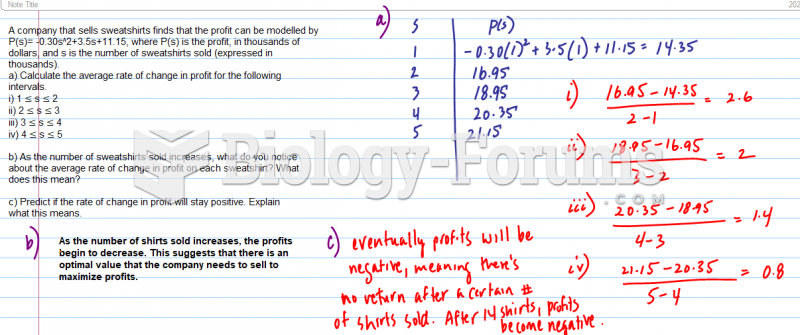Answer to Question 1
Note: The cost driver for engineering is number of engineering-hours, not number of engineers. This change does not, however, affect the solution itself.
1. Using the simple costing system, total overhead costs are equally allocated to projects. There were 3 projects in 2014, so the overhead cost per project is
= = 1,337,260 per project
2. Rates per unit cost driver.
Activity Cost Driver Rate
Design Design department hours 1,500,000 (1,000 + 5,000 + 4,000)
= 150 per design-hour
Engineering Engineering dept. hours 500,030 (2,000 + 2,000 + 2,200)
= 80.65 per engineering-hour
Construction Labor-hours 2,011,750 (20,800 + 21,500 + 19,600)
= 32.50 per labor-hour
Overhead cost allocated to each project using department overhead cost rates:
Sanders Hanley Stanley
Design: 150 1,000; 5,000; 4,000 150,000 750,000 600,000
Engineering: 80.65 2,000; 2,000; 2,200 161,300 161,300 177,430
Construction: 32.50 20,800; 21,500; 19,600 676,000 698,750 637,000
Total overhead costs 987,300 1,610,050 1,414,430
3.
Sanders
Hanley
Stanley
a. Department rates
(Requirement 2)
b. Plantwide rate
(Requirement 1)
987,300
1,337,260
1,610,050
1,337,260
1,414,430
1,337,260
Ratio of (a) (b) 0.74 1.20 1.06
The overhead allocated to Sanders decreases by 26 under the department rates, the overhead allocated to Hanley increases by about 20, and the overhead allocated to Stanley increases by about 6.
The three projects differ sizably in the way they use the resources of the three departments.
The percentage of total driver units in each department used by the companies is:
Department Cost
Driver
Sanders
Hanley
Stanley
Design
Engineering
Construction Design-hours
Engineering-hours
Labor-hours 10
32
33 50
32
35 40
36
32
The Sanders project uses only 10 of design-hours in 2014 and uses 32 of engineering-hours and 33 of construction hours. The result is that the overhead rate, based on allocating costs equally to all projects (33), will greatly overestimate the cost of resources used on the Sanders project, which uses very few design-hours. This explains the 26 decrease in indirect costs assigned to the Sanders project when department rates are used.
In contrast, the Hanley and Stanley projects use more of design (50 and 40, respectively). Hence, the use of department rates will report higher indirect costs for Hanley and Stanley than does a single overhead rate.
Sanders was probably complaining about the costs resulting from using the simple system because its project was being overcosted relative to its consumption of overhead resources. Hanley and Stanley, on the other hand, were having their projects undercosted and underpriced by the simple system. If the new department-based rates are used to price projects, Hanley and Stanley will be unhappy. CKM should explain to Hanley and Stanley how the calculations were done and point out their high use of design resources. CKM should discuss ways of reducing the consumption of design resources, if possible, and show willingness to partner with them to do so. CKM could even offer to phase in the new prices.
4. It would not be worthwhile to further refine the cost system into an ABC system if (1) a single activity accounts for a sizable proportion of the department's costs or (2) significant costs are incurred on different activities within a department, but each activity has the same cost driver or (3) there wasn't much variation among contracts in the consumption of activities within a department. If, for example, most activities within the design department were, in fact, driven by design-hours, then the more refined system would be more costly and no more accurate than the department-based cost system.
Answer to Question 2
D
Explanation: D) The standard of client interest requires a member to serve the client while maintaining integrity and objectivity.







